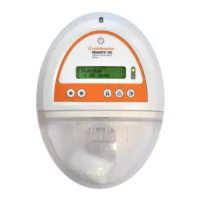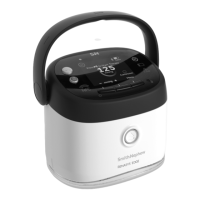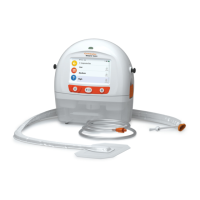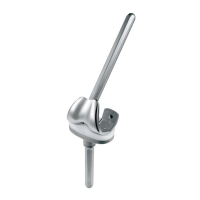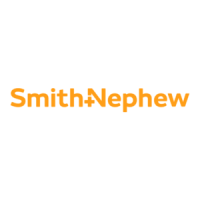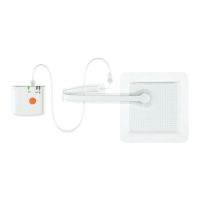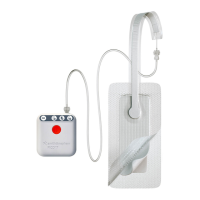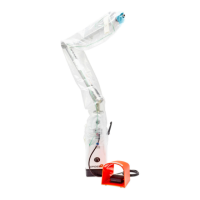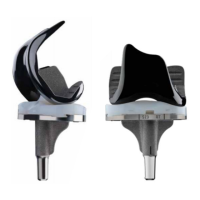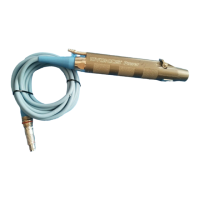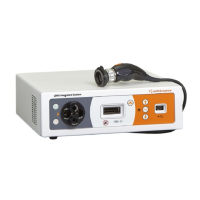Do you have a question about the Smith & Nephew renasys go and is the answer not in the manual?
Explains RENASYS GO NPWT, its mechanism, therapy duration, and expected wound healing timelines.
Covers potential pain, dressing change frequency, discomfort, and patient mobility during therapy.
Lists appropriate wound types for RENASYS GO therapy, such as chronic, acute, traumatic wounds, ulcers, burns, flaps, and grafts.
Lists conditions where RENASYS GO should not be used, including untreated osteomyelitis, exposed arteries, necrotic tissue, malignancy, and fistulas.
Illustrates and labels the main components of the RENASYS GO device, including buttons, display, and indicators.
Describes the different canister types, their clips, viewing windows, and connectors.
Demonstrates the correct and incorrect ways to orient the RENASYS GO device for optimal therapy delivery.
Details the device's power connection, including the DC cord, power supply, and power cord inlet.
Describes how to confirm the device is working through the Status/Alarm indicator and display readings.
Details the device's battery life, charging, and indicators for low battery status.
Explains how to power on the device and the behavior of continuous vs. intermittent therapy modes.
Provides step-by-step instructions for safely disconnecting the dressing from the canister tubing.
Details the process of removing an old canister and attaching a new one to the RENASYS GO device.
Instructs on how to reconnect the dressing to the canister tubing, with specific notes for different connector types.
Describes the function of each indicator light and control button on the device, like Power, Battery Status, Up/Down selectors, Keypad lock, and Audio Pause.
Details battery status indicators (full, low, charging) and their corresponding device states and therapy time remaining.
Explains indicators for normal operation, including solid green lights for Status/Alarm and Battery Top indicators.
Describes alarms and device status for low and very low battery conditions.
Explains alarms indicating low battery requiring charging, with details on operation time and remedies.
Covers alarms for extremely low battery and battery failure, indicating device status and potential power off.
Details critical battery alerts with limited operation time and the need for immediate charging or contacting a provider.
Explains alarms for high vacuum levels and over vacuum conditions, indicating therapy stop.
Provides steps to remedy vacuum alarms, typically involving contacting a healthcare provider.
Describes the alarm for detecting a significant air leak in the system.
Offers steps to address a leak alarm, including checking dressing, connections, and replacing canister.
Explains the alarm when device vacuum level is lower than prescribed therapy.
Provides steps to remedy a low vacuum alarm, typically involving contacting a healthcare provider if the status persists.
Indicates an alarm when the canister is full or there is a blockage in the system.
Offers steps to address blockage or full canister alarms, including checking and replacing the canister or connectors.
Covers alarms for inactive device, keypad lock, device failure, and calibration issues, indicating device status.
Explains alarms for non-delivery, device failure, and the status of the keypad lock.
Provides instructions on how to attach the carry strap to the RENASYS GO device.
Describes the features and usage of shoulder and extension straps for carrying the device.
Details how to place the RENASYS GO device into the carry bag and its features like belt loop and tubing pouch.
Outlines how the device should be cleaned using diluted bleach solution and clean water.
States that the device is maintained by the healthcare provider and should last the duration of therapy.
Specifies storage, transport, operational temperature, humidity, and atmospheric pressure ranges.
Explains the device housing's protection level against external debris and falling water (IP 22).
| Brand | Smith & Nephew |
|---|---|
| Model | renasys go |
| Category | Medical Equipment |
| Language | English |
